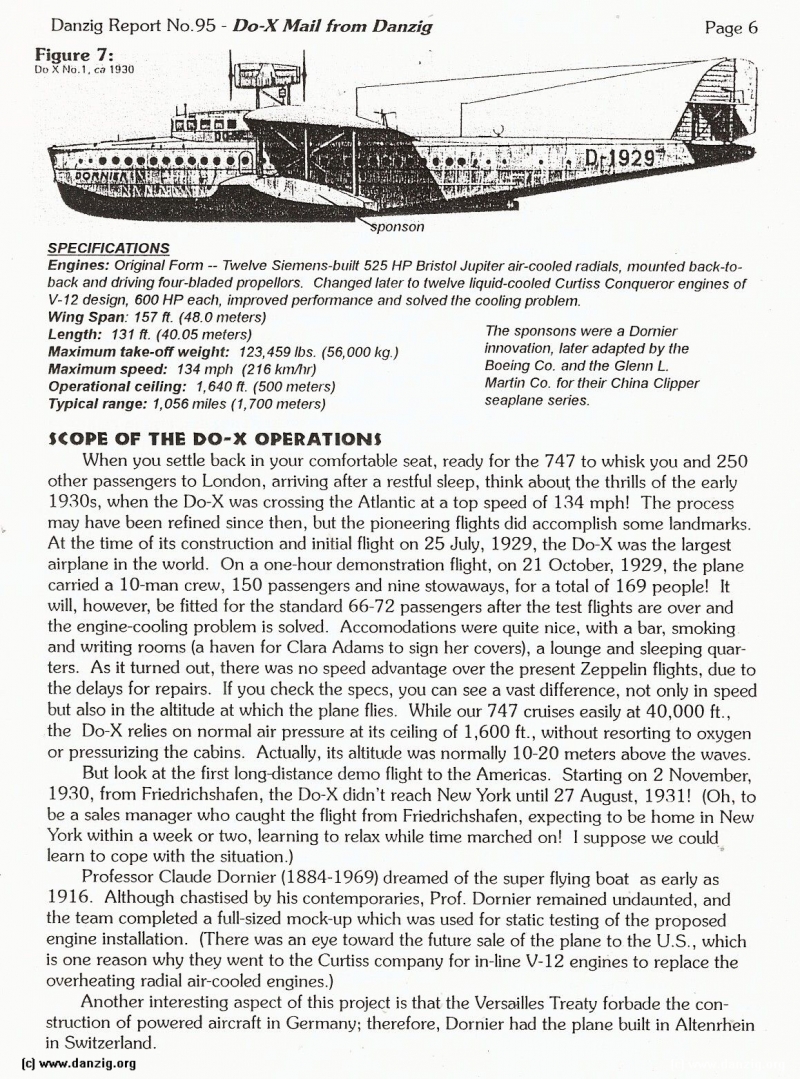
SCOPE OF THE DO-X OPERATIONS
When you settle back in your comfortable seat, ready for the 747 to whisk you and 250 other passengers to London, arriving after a restful sleep, think about the thrills of the early 1930s, when the Do-X was crossing the Atlantic at a top speed of 134 mph! The process may have been refined since then, but the pioneering flights did accomplish some landmarks. At the time of its construction and initial flight on 25 July, 1929, the Do-X was the largest airplane in the world. On a one-hour demonstration flight, on 21 October, 1929, the plane carried a 10-man crew, 150 passengers and nine stowaways, for a total of 169 people! It will, however, be fitted for the standard 66-7 2 passengers after the test flights are over and the engine-cooling problem is solved. Accornodations were quite nice, with a bar, smoking and writing rooms (a haven for Clara Adams to sign her covers), a lounge and sleeping quart ers. As it turned out, there was no speed advantage over the present Zeppelin flights, due to the delays for repairs. If you check the specs, you can see a vast difference, not only in speed but also in the altitude at which the plane flies. While our 747 cruises easily at 40,000 ft., the Do-X relies on normal air pressure at its ceiling of 1,600 ft., without resorting to oxygen or pressurizing the cabins. Actually, its altitude was normally 10-20 meters above the waves.
But look at the first long-distance demo flight to the Americas. Starting on 2 November, 1930, from Friedrichshafen, the Do-X didn’t reach New York until 27 August, 1931! (Oh, to be a sales manager who caught the flight from Friedrichshafen, expecting to be home in New York within a week or two, learning to relax while time marched on! I suppose we could learn to cope with the situation.)
Professor Claude Dornier (1884-1969) dreamed of the super flying boat as early as 1916. Although chastised by his contemporaries, Prof. Dornier remained undaunted, and the team completed a full-sized mock-up which was used for static testing of the proposed engine installation. (There was an eye toward the future sale of the plane to the U.S., which is one reason why they went to the Curtiss company for in-line V-12 engines to replace the overheating radial air-cooled engines.)
Another interesting aspect of this project is that the Versailles Treaty forbade the cons truction of powered aircraft in Germany; therefore, Dornier had the plane built in Altenrhein in Switzerland.
Danzig Report Vol. 1 - Nr. 95 - April - May - June - 1997, Page 6.
Hits: 4186
Added: 19/07/2015
Copyright: 2025 Danzig.org

